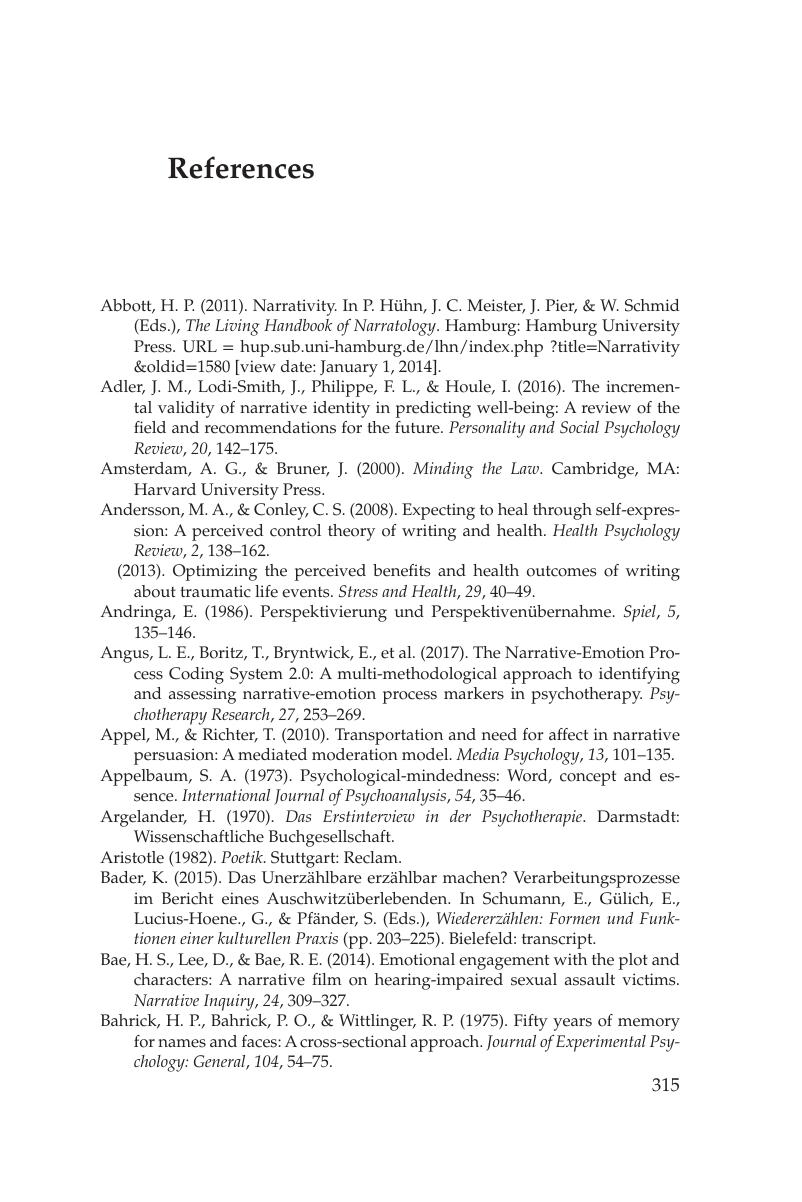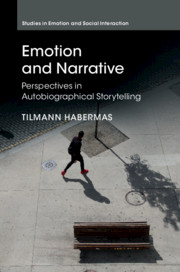Book contents
- Emotion and Narrative
- Studies in Emotion and Social Interaction
- Emotion and Narrative
- Copyright page
- Contents
- Figures and tables
- Preface
- Acknowledgments
- Narratives
- 1 Emotions
- Part I Emotions in oral autobiographical narratives
- Part II How narratives evoke emotions
- Part III Narratives reflect defense against emotions, and narrating helps cope with them
- Part IV Transformative co-narratives by parents and therapists
- References
- Index
- Studies in Emotion and Social Interaction
- References
References
Published online by Cambridge University Press: 17 December 2018
- Emotion and Narrative
- Studies in Emotion and Social Interaction
- Emotion and Narrative
- Copyright page
- Contents
- Figures and tables
- Preface
- Acknowledgments
- Narratives
- 1 Emotions
- Part I Emotions in oral autobiographical narratives
- Part II How narratives evoke emotions
- Part III Narratives reflect defense against emotions, and narrating helps cope with them
- Part IV Transformative co-narratives by parents and therapists
- References
- Index
- Studies in Emotion and Social Interaction
- References
Summary

- Type
- Chapter
- Information
- Emotion and NarrativePerspectives in Autobiographical Storytelling, pp. 315 - 344Publisher: Cambridge University PressPrint publication year: 2018



